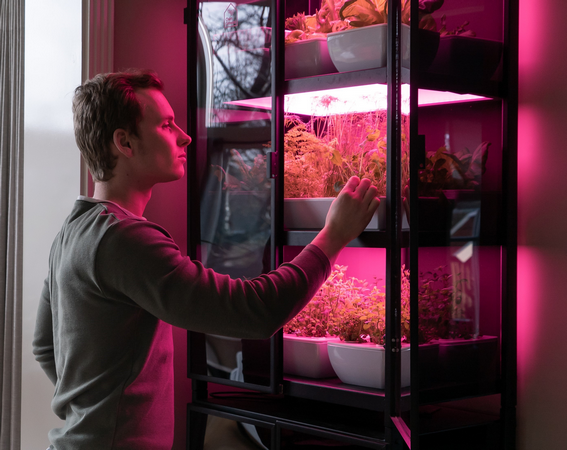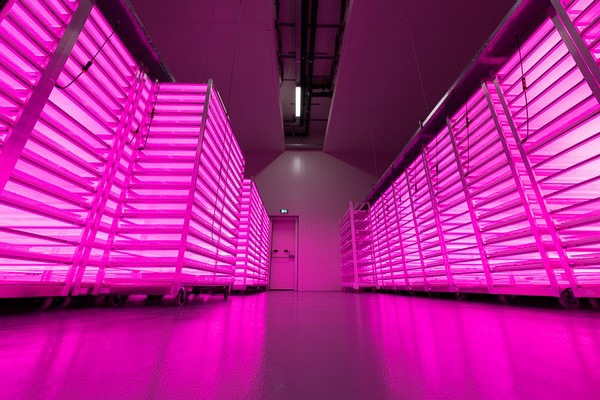A fast-growing population, increasingly crowded cities and peripheral towns, and growing demand for healthy and fresh food. In order to meet these developments, local production of crops, leaf crops, and herbs, for example, is highly desirable. Vertical farming fits in perfectly with this. With this innovative cultivation technique, crops can be grown in a closed and multilayer cultivation system, on a very small floor area. Moreover, cultivation can take place all year round, in a perfectly controlled environment and independent of local (weather) conditions. But also: very sustainable and efficient, says Lennart Bijl, Operations Manager at Own Greens.
Grown in the province, grown on the edge of town or grown in the supermarket and sold directly: local cultivation has various definitions. But in all cases, transport is kept to a minimum and as many (leaf) crops and herbs as possible find their way to the consumer, Lennart Bijl, Operations Manager at Own Greens, knows. "In traditional agriculture, a lot of food is still wasted. Figures from the FAO (Food & Agriculture Organization) show for example that approximately 28 percent of the agricultural land in our world is used to grow discarded food. This waste is the result of poor storage, inefficient distribution, and spoilage during transport, among other things. In addition, supply and demand do not always match. Vertical farming offers a solution to this by producing food all year round at or close to the places where the products are processed, sold or consumed. Think, for example, of the local cultivation of lettuce and herbs just outside the city, for sale in supermarkets. But also the cultivation of basil plants in the factory, where they are processed directly into delicious tapenades and pestos.
 Lennart Bijl
Lennart Bijl
Optimal product quality and freshness
Vertical farms are currently being set up around the world in the vicinity of major cities. This is not surprising, according to Bijl, as it means that the (leafy) crops and herbs no longer have to travel thousands of transport kilometers before reaching their sales or production destination. "This is an absolute advantage for product quality and freshness. Moreover, considerable savings can be made in transport movements, transport costs, and the associated CO2 emissions."

For growing, Lennart uses Leaf Carrier by Bever Innovations, as shown here in another grower's greenhouse.
At any desired location
Compared with a glasshouse, for example, a vertical farm is easy to set up, he says. For example, in a vacant office building, factory building, warehouse or container. "The closed cultivation environment gives the crops and herbs excellent protection against external influences, such as bad weather. Moreover, the best conditions in terms of temperature, humidity and light can be guaranteed throughout the year. This also makes the vertical farm suitable for places where food cultivation is not normally possible. Think of the northern hemisphere, where there is less daylight. But also the vast desert region in the Middle East, where water is scarce and desert sand is unusable for local cultivation."
For more information:
Bever Innovations
info@beverinnovations.com
www.horticulture.beverinnovations.com
Stephan den Boer
sbo@beverinnovations.com
+31 (0)638 69 08 02
 Own Greens
Own Greens
www.owngreens.com
Lennart Bijl
lennart@owngreens.com
